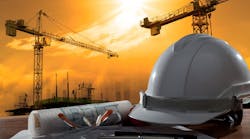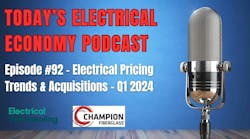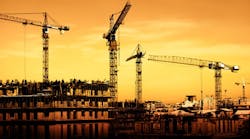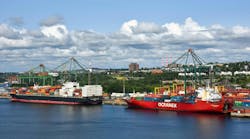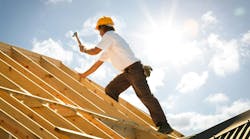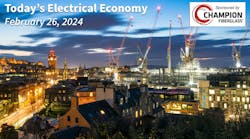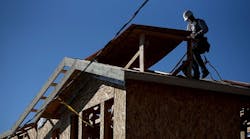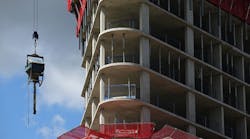The multi-family market has had strong demand in recent years and is set to remain that way in 2015 despite certain headwinds that could affect the industry, said panelists during a press conference at the National Association of Home Builders (NAHB) International Builders’ Show (IBS) in Las Vegas.
The number of multi-family apartments forecast to be built is likely to reach a sustainable level that is higher than the levels of production in the past. As the industry reaches that new plateau, the pace of construction is likely to level off in 2015 and into 2016.
“The multi-family industry is strong and producing more units than in previous cycles,” said NAHB Chief Economist David Crowe in a press release. “The industry has shown dramatic increases in construction since the recession, but the level of increase will moderate as we approach equilibrium. We are forecasting that 358,000 units will be developed in 2015 and 361,000 units in 2016. One of the indicators for our forecast is NAHB’s Multi-family Production Index, which is a survey of our members’ attitudes toward the market. They have been telling us that the market is very strong and is expected to stay that way for the foreseeable future.”
NAHB said two segments within the multi-family housing market driving much of this growth are housing for homebuyers aged 55 and over and affordable housing. “There are many families in America that have a great need for affordable housing,” said Mike Costa, president and CEO of Highridge Costa Housing Partners LLC in Gardena, Calif., in the release. “We have a long waiting list for our apartments at all of our communities. There is a need for us to be building more.”
Paul Emrath, NAHB’s vice president of survey and housing policy research, said in a separate press release that the 55+ housing market has been one of the healthiest segments of the overall housing market and is likely to remain that way over the next several years. “When you look at age-restricted single-family starts, there were as many in the first half of 2014 as in all of 2012,” he said. “And going forward, the steady rise in the 55-and-over population will signal an increased need for housing to accommodate that group.”
Emrath also noted that builder confidence has steadily increased over the past several years. “NAHB’s 55+ Housing Market Index (HMI), a survey of members that measures builder and developer confidence for that market, has regularly posted year-over-year gains,” he said.
Builders and developers say they have seen an increase in not only in the number of people who are generally interested in 55+ housing, but also in the number of people who are actually making the move to purchase a new home. “We are seeing more consumers actually make the decision to buy a new home as they are able to sell their current home at an acceptable price,” said Steve Bomberger, chairman of NAHB’s 50+ Housing Council and president of Benchmark Builders Inc. in Wilmington, Del. “We are busier now than ever before. And I don’t think it’s going to slow down anytime soon.”
NAHB panelists at the Builders Show also discussed the current design trends they now see in the industry. “Green and energy-efficient features and building practices continue to be popular, including high-efficiency appliances and mechanical systems, green roofs, locally sourced building materials and the recycling of construction waste,” said Sanford Steinberg, principal of Steinberg Design Collaborative LLP in Houston. “On the market-rate side, apartment and condo buildings are also including unique features and services like bike storage rooms with equipment for bike maintenance, dog washing and grooming areas, larger bathrooms with separate shower and tub, open floor plans and high end finishes similar to custom homes.”


